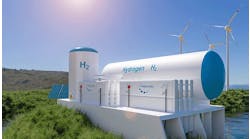Linde North America has received certification of its Clear Lake, Texas, HyCO (hydrogen/carbon monoxide) plant under the American Chemistry Council's ("ACC") Responsible Care program.
According to Jake Leavins, head of the Linde Houston HyCO cluster, the Clear Lake team has worked hard to demonstrate Linde's commitment to ACC's Responsible Care program. This certification exemplifies Linde's focus on health, safety, security and environmental priority.
Responsible Care is a globally recognized management system aimed at helping companies improve performance in areas such as safety, health, environment and security. Certification is mandatory for all ACC member companies, which must undergo headquarter and facility audits by an independent, accredited auditor to verify that they have a structure and system in place that manages and measures performance.
Since 2008, 22 Linde plants in North America have been certified under the program. The Clear Lake plant has been operating for 34 years and produces hydrogen and carbon monoxide for use in chemical manufacturing and oil refining. It produces 45 million cubic feet of hydrogen and 33 million cubic feet of carbon monoxide for customers in the Houston Ship Channel, Bayport, and Texas City areas. The plant employs 29 people.
The Responsible Care management system offers an integrated, structured approach for driving continuous improvement in seven key areas: community awareness and emergency response; security; distribution; employee health and safety; pollution prevention; process safety; and product stewardship.
Implementing the Responsible Care system is a multi-step process. Companies must first plan -- identify, assess and evaluate potential hazards and risks associated with their products, processes and operations -- and establish goals and objectives to address any significant hazards or risks. Next, they must do what they have planned, checking their progress along the way to measure performance and take necessary corrective actions. Communicating with employees and other stakeholders, including neighbors and customers, along the way.



